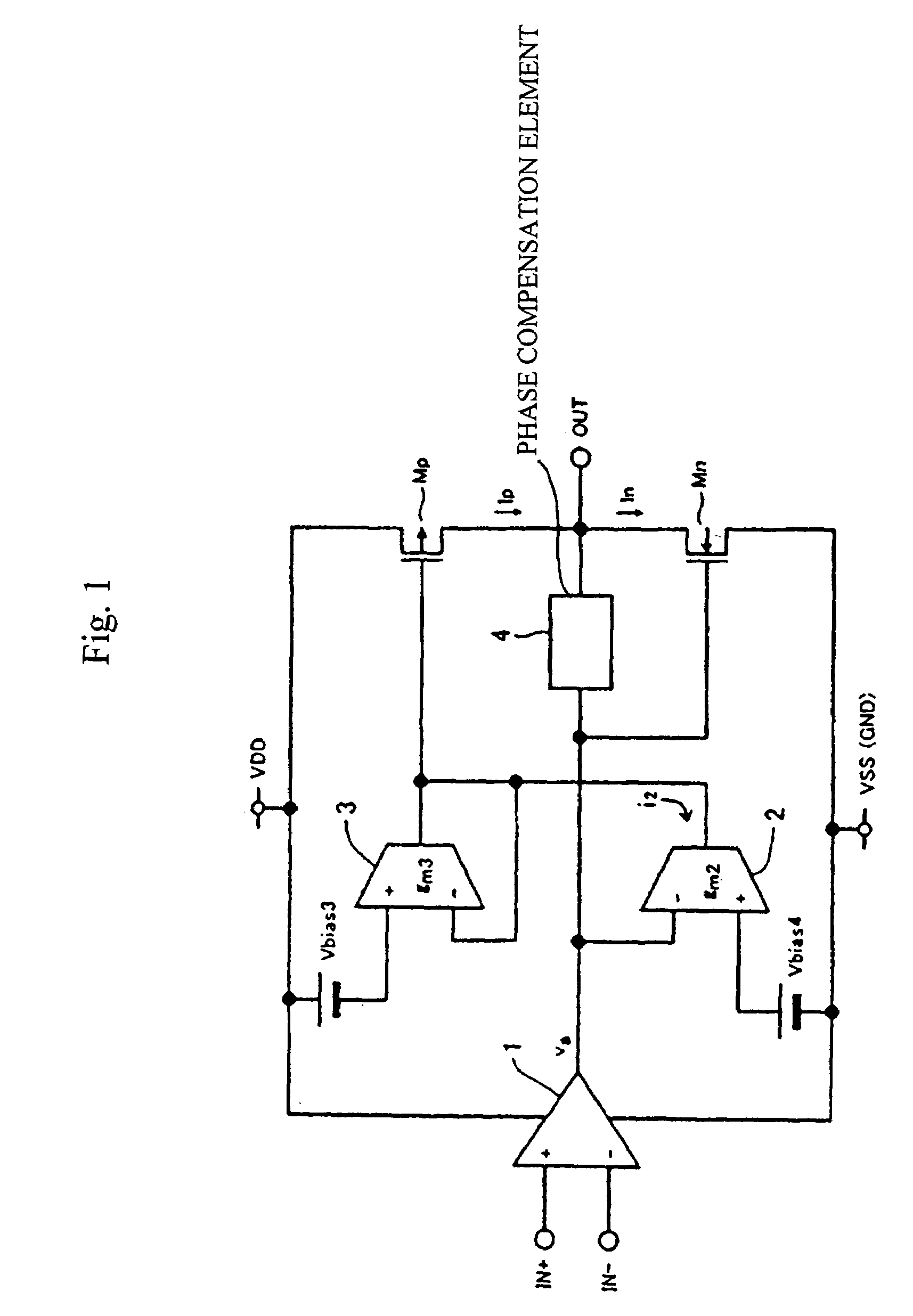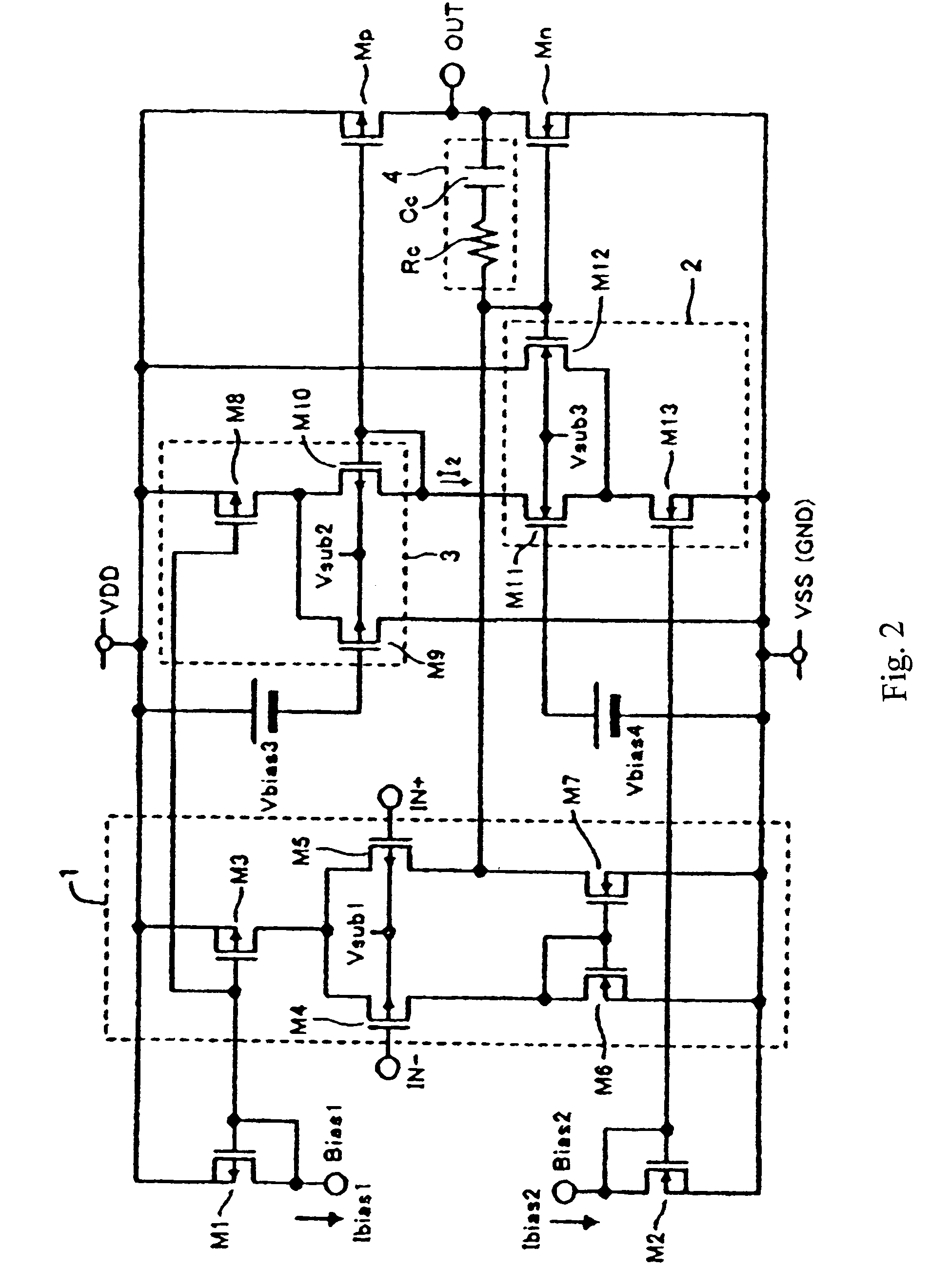Amplifier circuit
a technology of amplifier circuit and circuit, applied in the field of amplifier circuit, can solve the problems of increasing current consumption and complicated circuit architecture of the output stage of the operational amplifier, and achieve the effect of reducing power consumption and simple circuit architectur
- Summary
- Abstract
- Description
- Claims
- Application Information
AI Technical Summary
Benefits of technology
Problems solved by technology
Method used
Image
Examples
Embodiment Construction
[0019]FIG. 1 is a circuit diagram showing the basic architecture of an amplifier circuit according to the present invention. The amplifier circuit includes a differential amplifier 1 in a first amplifying stage, a first transconductance amplifier 2 and a second transconductance amplifier 3 in a second amplifying stage, and a first output transistor Mp and a second output transistor Mn which form the push-pull outputs having polarities opposite from each other and use the push-pull outputs as an output OUT of this amplifier circuit in an output stage. Further, a phase compensation element 4 is provided between the output of the differential amplifier 1 and the output OUT of the amplifying circuit.
[0020]The differential amplifier 1 includes an inverted input IN−, a non-inverted input IN+ and an output and a difference signal between signals inputted to the inverted input IN− and the non-inverted input IN+ is amplified and then is outputted from the output.
[0021]The first transconducta...
PUM
 Login to View More
Login to View More Abstract
Description
Claims
Application Information
 Login to View More
Login to View More - R&D
- Intellectual Property
- Life Sciences
- Materials
- Tech Scout
- Unparalleled Data Quality
- Higher Quality Content
- 60% Fewer Hallucinations
Browse by: Latest US Patents, China's latest patents, Technical Efficacy Thesaurus, Application Domain, Technology Topic, Popular Technical Reports.
© 2025 PatSnap. All rights reserved.Legal|Privacy policy|Modern Slavery Act Transparency Statement|Sitemap|About US| Contact US: help@patsnap.com



